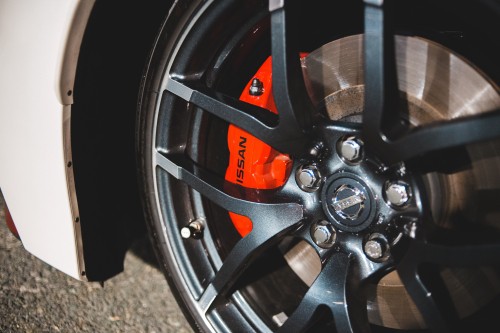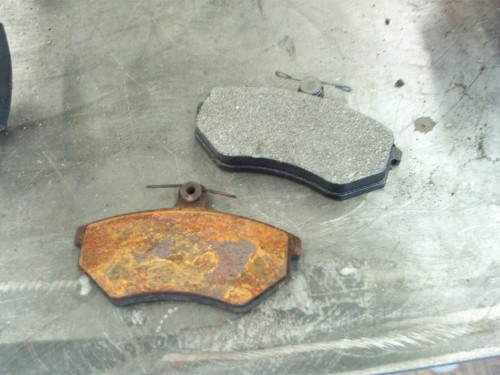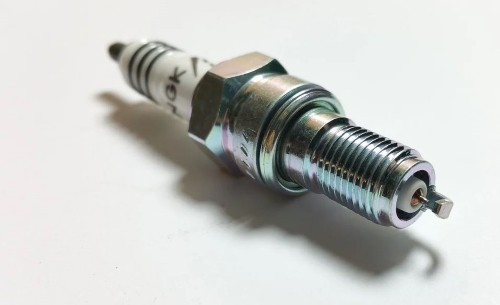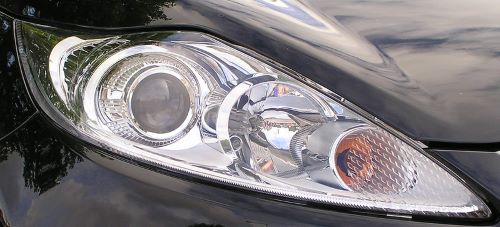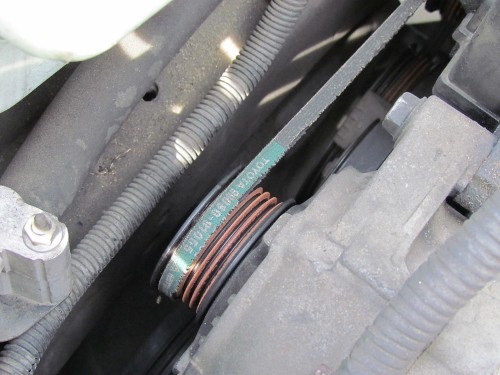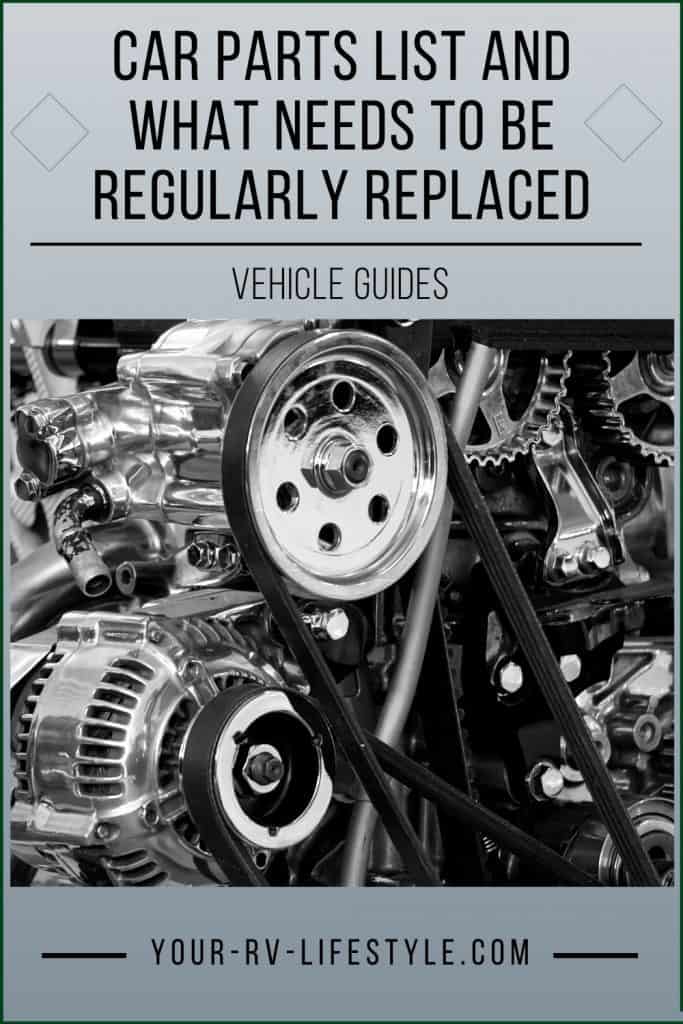Depending on how much and how often you drive, it can be easy to forget that your car will need upkeep and maintenance. All cars have a long list of parts and some of which need to be replaced on a regular cadence due to normal wear and tear. Other parts can last the entire life of the car, save any accidents or issues with that particular part.
Your mechanic should have a pretty good idea of what needs to be replaced when going in for a service, but unfortunately if you don’t have a mechanic you can trust, they may be rushing you to replace sooner than needed. If you are somebody who changes their own oil you are mostly likely not bringing your car to the shop too often so without the eyes of professionals on your car it’s up to you to make sure all your parts are in order and up to specs. Either way, being educated on your car parts and what needs to be regularly replaced will keep you safer and overall, more knowledgeable. If you’re an RV enthusiast keep in mind regular maintenance is also important.
Keys Workshop Mechanic Tools Edited 2020 by Tool Dude / CC BY 2.0. Sometimes it is easy to think you can replace a part yourself just from watching a YouTube video, but it is important to remember your mechanic will always have the correct tools for the job available.
Not every car is the same, so it is important to mention that replacing parts can vary from vehicle to vehicle. Depending on the manufacturer and the parts being used, the longevity can vary depending on the quality. Your driving style and habits will also have a fairly large impact on how often certain parts will be replaced. So, it is not exactly possible to provide a list of parts and the exact miles in which they need to be replaced. Rather than that, we will identify the most basic parts of the car, what needs to be replaced, and tell-tale signs that indicate if a part is in need of replacement.
- Battery
- Tires
- Rotors
- Brake Pads
- Oil Filter
- Air Filter
- Spark Plugs
- Headlights / Blinkers
- Fuel Injector
- Windshield Wipers
1. Battery
The only time you find yourself thinking about the battery is when it’s dead and you can’t start your car, but by that time it is too late. The battery is one of the most important parts of your car, and for RVs too. Without it you won’t be able to start your vehicle (besides the dreaded push start if you own a manual transmission.) It powers the electronics in the vehicle with stored electricity and gives your car the initial power needed to start. However, the battery itself is not what powers the electronics while the car is already started, the alternator does that. In order to start your car your battery will have to have enough electricity available which shouldn’t be a problem unless the battery is dead or too old. Most drivers have learned this the hard way if you have left your lights on overnight. Typically, a jump start and a long drive will recharge your battery but if the batter is too old it may need to be replaced. Generally speaking, a battery can last about three to five years but can vary. Some signs your battery may be dying include dimness of your headlights, trouble starting the car or the battery light is on the dashboard. But not every car will have any obvious warning lights, so you can have your battery tested by a mechanic to determine the level of deterioration.
If your battery is still relatively new and has just died from leaving a light on overnight, using jumper cables and a friend’s car is a good way to charge your battery enough to get it started. Once jumped and started it is helpful to drive the car to recharge the battery.
2. Tires
Ever hear the saying “where the rubber meets the road?” This is directly related to the tires of a car. Tires are specifically the rubber ring-shaped part that is attached around the wheel. This does not include the rim, axel or brakes. Tires are one of the more obvious parts on the list that need to be regularly replaced considering you probably see them every time you go to drive, but it may not always be clear to you if they need to be replaced. Because there are so many different kinds of tires and people’s driving habits differ, there is no exact mileage to determine when a tire is worn out. However, by examining the tread on any given tire you can discern whether or not it should be replaced. There are actually regulations put into place from certain states that mandate tire replacement when the depth of the tread reaches 2/32 of an inch so it is important to keep an eye on it for safety purposes. Regardless of how many miles have been driven on the tires and how much tread is left, a tire that is older than 10 years old should also be replaced.
Checking Tread on Tires by TireZoo / CC BY 2.0
A great way to check whether or not your tire should be replaced is by checking the tread. Using a coin can help to determine how much tread is left. This example is of a tire that would be referred to as ‘bald’ and should not be driven on.
3. Rotors
You may not be as familiar with what rotors are and what they do but I can assure you they are important and do need to be replaced at some point. Rotors are a metal disc fastened to each wheel that work in coordination with brake pads to stop the car.
The rotor in this picture is the silver-colored metal disc behind the black rims. The red piece is the caliper that holds the brake pads, which in turn grips the rotor to stop a vehicle.
Rotors start off with a smooth finish to help maximize the friction with the brake pads but after normal wear and tear the finish on the rotors can begin to deteriorate. For the most part, rotors will last longer than brake pads so they do not need to be replaced as often, but they are nothing to forget about. There are a few ways to know when it’s time to replace. If you are able to see your rotor through your rim, check to see if there are any grooves or indents. If yes, then it’s a good time to have them replaced. If you can’t see the rotors themselves listen for grinding, squeaking, or squealing. This is a pretty good indicator that the brakes or rotors need to be replaced. If you feel any vibration or wiggling while braking, we would recommend going to a mechanic as soon as possible.
4. Brake Pads
Brake pads are the pieces held in the calipers that are actually squeezing on the rotor. After miles of braking, the friction from the brake pads on the rotors wear each other down and ultimately both will need to be replaced. Brake pads are composed of a steel backing with a friction material on the surface. Two of the most common friction materials are ceramic or metallic. When this material is worn down it is very important to replace your brake pads because stopping time can be drastically increased if braking solely on the steel backing. It’s not always easy to tell if your brakes are getting to the end of their life but they are something you definitely want to replace sooner than later. Like the other parts of the car there is no exact mileage to know when to replace, but an estimated number of miles can range from 30,000 to 60,000. Some brake pads have a built-in metal strip so when the friction material is getting to the point of needing replacement you will actually hear that classic squeaking noise every time you brake. Not all brakes may have this so you may have to either visually look at the pads themselves or be aware of the braking power you feel when driving. You may not realize how little braking power you had until you get a new set of brakes, so going to a trusted mechanic to check them is recommended.
New vs. Old Brake Pads by Dave Linger / CC BY 2.0
See here the difference in what an old used brake pads looks like compared to a new one.
5. Oil Filter
The oil in your car is more or less the blood of your car. Keeping the mechanisms of your car lubricated and clean stops friction, heat, and other potential issues from occurring. So, if oil is that important wouldn’t you want to make sure it is clean and optimal for its performance? That is the job of the oil filter. The oil filter is a metal can that is typically secured somewhere on the engine block but varies from car to car so you can use your owner’s manual to see exactly where it is located. The main purpose of it, as the name implies, is to filter the oil in your car. Long term use of oil can lead to impurities in the oil which if not removed can lead to a build up and malfunctions. To avoid this, oil from the engine gets pumped into the filter where it is run through a fiber, most often a synthetic material, and then replaced into the engine. Because of the importance of oil and the filter this is generally the car part that will need to be replaced most often. The type of oil you use will help determine how often it needs to be replaced but usually every 3,000 miles is a good milestone to follow. With that being said, it is recommended to change the oil filter with each oil change. Not everybody will agree with that and some will say to change the oil filter every other oil change, but considering the importance of its function, and not to mention how cheap they are, it makes sense to replace each time. Paying a little bit more with each oil change can help with the longevity of your car’s engine.
Oil filters can come in different shapes and sizes but this is a common filter used on cars.
6. Air Filters
Air filters are an important aspect to your car that helps keep your engine and cabin clean of debris. There are two air filters in each car and both of them need to be regularly replaced. One of them being the engine air filter and the other being a cabin air filter, their name implies their purpose. The engine air filter is located under the hood of your car on the intake so all air that is processed to the engine is filtered and cleaned first. Keeping dust and other contaminants from the engine will help with performance and longevity. The cabin air filter performs the same function but keeps the air inside the car clean. Typically located behind the glove box, the cabin air filter focuses on removing pollutants like pollen and dust. However, not all cabin air filter will not stop pollutants such as car exhaust or smog so if you are sitting in a tunnel with bumper-to-bumper traffic pop on that recirculation button. There may be obvious signs you filters need to be changed such as stuffy air in the cabin or decreased engine performance if the engine air filter is clogged, but it is best to change the filters before it gets to these points. Your owner’s manual will let you know when to replace the filters, but checking the quality of the filter is relatively easy. Watch a brief video here to see how you can check your engine air filter
Air Filter Change by Ryan Gsell / CC BY 2.0
See the dramatic difference between an old engine air filter and a new filter. The used filter had only about 8,000 miles of use.
7. Spark Plugs
Spark plugs are a critical component to the combustion system of your car. To briefly explain, your engine works off the combustion of a fuel and air mixed together. These tiny and controlled explosions are what power the pistons to move and ultimately power the engine. The spark plugs are what ignite the fuel/air mix with a small zap of electricity. This may seem a little complex but take a look at this simple visualization to help explain.
Understanding the function of the spark plugs allows us to understand not only the importance of the part but also how much abuse that part takes so it is no surprise to find out it needs to be regularly replaced. Once again, parts will vary from car to car so it is always important to review your owner’s manual, but some signs your spark plugs need to be replaced may be obvious. If you are confident your battery is charged but your car is having issues starting it may be the spark plugs. While driving, if you notice your engine is performing sluggishly or the fuel economy has declined this can also be a sign of overused spark plugs.
Spark plugs can utilize a few different materials that will vary in quality and price. The three most common materials are copper, iridium, and platinum.
8. Headlights / Blinkers
An easy way to avoid a ticket, or more importantly an accident, is to have working headlights and blinkers. Even with one headlight out visibility at night can be considerably reduced. With a blinker out, alerting other drivers of your intentions is non-existent and can lead to accidents. For myself, I check all the lights on my vehicle once a month to make sure all are functioning. By simply getting out of your car and checking each of the lights you can drive with peace of mind. Replacing headlights and blinkers is nothing to lose sleep over and can be done with minimal tools, so it’s not always necessary to head over to your mechanic for something this minor. If replacing the bulb doesn’t work, you may have other electrical problems so going to your mechanic would be your best bet.
Headlight by Rob Tiller / CC BY 2.0. Your high beams are usually separate bulbs from your headlights or blinkers so make sure to check those as well when testing your lights.
9. Drive Belt
The drive belt, also known as a serpentine belt, is one long reinforced rubber belt that winds through the engine area. This one belt powers the alternator, power steering pump, water pump and air conditioning compressor.
Drive belts are built to withstand the constant tension and friction so they don’t exactly wear themselves out all too quick. However, they are susceptible to issues because of consistent and severe weather changes which may accelerate the deterioration of the rubber belt. Other issues in the engine may cause the drive belt to become faulty as well. An oil leak, for example, can be catastrophic if oil is leaked directly onto the belt. If this happens you should go to your mechanic for a replacement right away. Some signs you can use to tell if your drive belt needs to be replaced include, listening for squealing noises under the hood or examining the belt itself for wear. Any cracks, fraying, cuts, or pieces missing is an immediate reason that the belt needs to be replaced.
Corolla belt by Bozart2000 / CC BY 2.0. This is an obvious example of a drive belt that desperately needs to be replaced.
10. Windshield Wipers
Here is a car part that needs to be regularly replaced but can be done by yourself. Windshield wipers can last upwards of a year, maybe more, depending on the amount of use.
Because the wipers are made of a rubber material they can rot and become less efficient over time. If you notice your wipers smearing and streaking the rain instead of removing it you will want to replace them as soon as possible so you can see properly. You can usually hear the wipers squeaking before it gets to this point so try to replace before your vision is impaired.
Winter conditions can do a number on your windshield. Frost combined with road salt can reduce your visibility to nearly zero, so having working windshield wipers is imperative to your safety.
Conclusion
Cars can easily be something we take for granted each and every day. It is easy to forget just how amazing cars are and how much has to happen to make your car start and run. Any given car has roughly about 30,000 parts so creating a car parts list and what needs to be regularly replaced can be helpful in keeping track of your maintenance. Personally, I keep a notes section on my phone of the exact mileage in which my parts were replaced but planning regular maintenance services can help you stay up to date on the quality of your parts. We may not all be mechanics but learning more about your vehicle can keep you safe and saving money.

Jill Miller is the founder of Your RV Lifestyle. Trading corporate America for the open road, Jill, along with her partner Jose, began their RV journey, making an unconventional start by wintering in New Jersey. A natural adventurer, she was motivated by a desire to explore the USA and beyond, embracing the varied landscapes, communities, and cultures across the country.
For Jill, the allure of RV living was not about material accumulation, but rather the pursuit of an adventurous, fulfilling lifestyle. A lover of golf, bicycling, hiking, and line dancing, she has carried her passions across the country, engaging with them in diverse settings. Jill’s commitment to the RV lifestyle came after years of careful research, numerous consultations with RV owners, and personal trials, including living in a rental RV.



